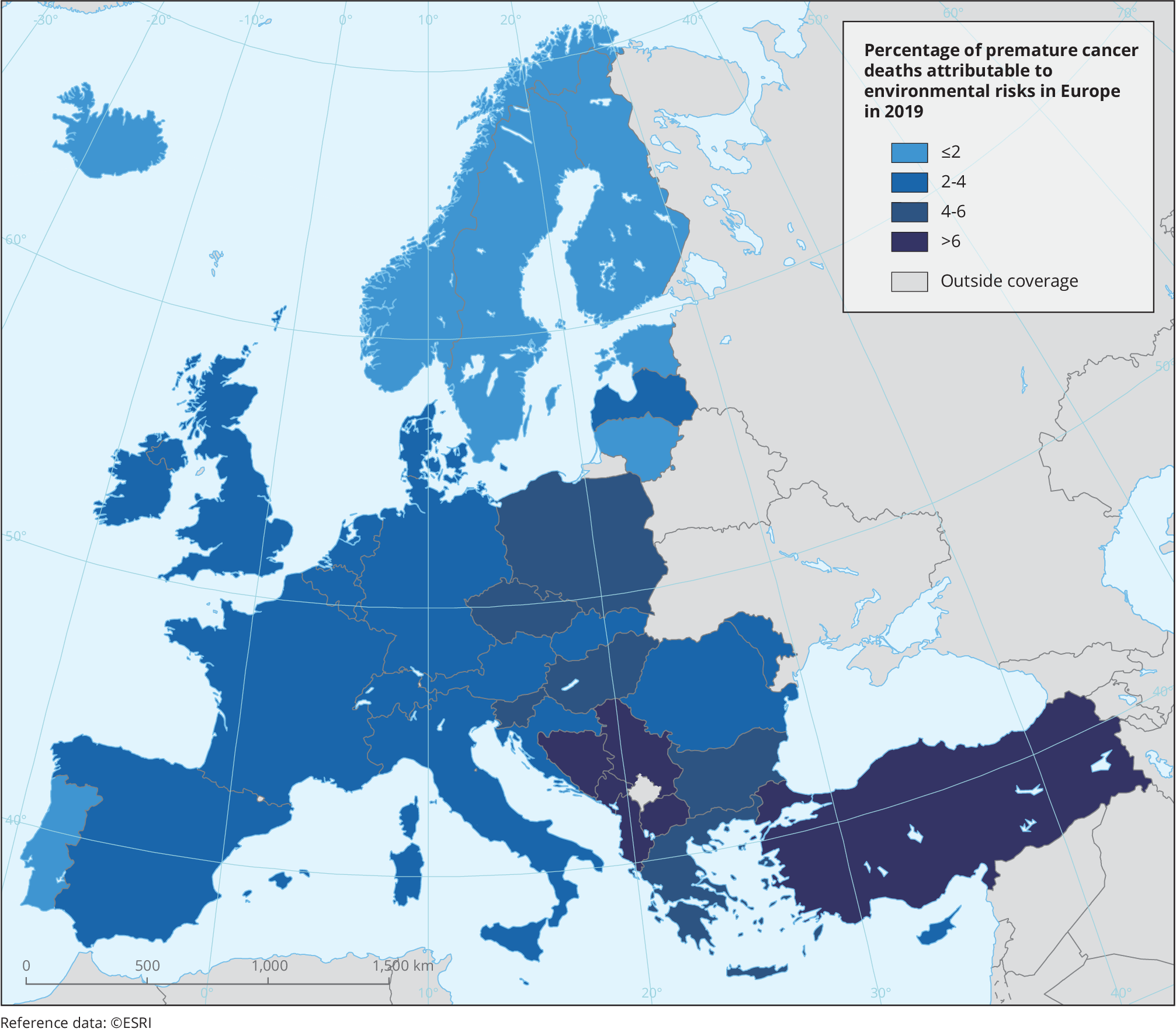Brown, K. F., et al., 2018, ‘The fraction of cancer attributable to modifiable risk factors in England, Wales, Scotland, Northern Ireland, and the United Kingdom in 2015’,British Journal of Cancer118(8), pp. 1130-1141 (DOI: 10.1038/s41416-018-0029-6).
Couespel, N. and Price, R., 2020,Strengthening Europe in the fight against cancer, European Parliament, Policy Department of Life Policies (https://www.europarl.europa.eu/thinktank/en/document/IPOL_STU(2020)642388).
Dyba, T., et al., 2021, ‘The European cancer burden in 2020: incidence and mortality estimates for 40 countries and 25 major cancers’,European Journal of Cancer (Oxford, England: 1990)157, pp. 308-347 (DOI: 10.1016/j.ejca.2021.07.039).
EU-OSHA, 2014,Exposure to carcinogens and work-related cancer: a review of assessment method. European Risk Observatory executive summary, European Agency for Safety and Health at Work, Bilbao, Spain.
EU-OSHA, 2022, ‘Work-related cancer’, European Agency for Safety and Health at Work (https://osha.europa.eu/es/themes/work-related-diseases/work-related-cancer).
Goodson, W. H., et al., 2015, ‘Assessing the carcinogenic potential of low-dose exposures to chemical mixtures in the environment: the challenge ahead’,Carcinogenesis36(Suppl 1), pp. S254-S296 (DOI: 10.1093/carcin/bgv039).
Gredner, T., et al., 2018, ‘Cancers due to infection and selected environmental factors’,Deutsches Ärzteblatt International115(35-36), pp. 586-593 (DOI: 10.3238/arztebl.2018.0586).
Hofmarcher, T., et al., 2020, ‘The cost of cancer in Europe 2018’,European Journal of Cancer129, pp. 41-49 (DOI: 10.1016/j.ejca.2020.01.011).
IARC, 2018,Les cancers attribuables au mode de vie et à l’environnement en France métropolitaine, International Agency for Research on Cancer (https://gco.iarc.fr/projects/paf-france-fr).
IHME, 2020, ‘Global Burden of Disease data set’, Institute for Health Metrics and Evaluation (https://ghdx.healthdata.org/gbd-results-tool).
Madia, F., et al., 2019, ‘Carcinogenicity assessment: Addressing the challenges of cancer and chemicals in the environment’,Environment International128, pp. 417-429 (DOI: 10.1016/j.envint.2019.04.067).
Parkin, D. M., et al., 2011, ‘The fraction of cancer attributable to lifestyle and environmental factors in the UK in 2010’,British Journal of Cancer105(Suppl 2), pp. S77-S81 (DOI: 10.1038/bjc.2011.489).
Prüss-Üstün, A., et al., 2016,Preventing disease through healthy environments: a global assessment of the burden of disease from environmental risks, World Health Organization, Geneva, Switzerland.
Sung, H., et al., 2021, ‘Global Cancer Statistics 2020: GLOBOCAN estimates of incidence and mortality worldwide for 36 cancers in 185 countries’,CA: A Cancer Journal for Clinicians71(3), pp. 209-249 (DOI: 10.3322/caac.21660).
Tybjerg, A. J., et al., 2022, ‘Updated fraction of cancer attributable to lifestyle and environmental factors in Denmark in 2018’,Scientific Reports12(1), p. 549 (DOI: 10.1038/s41598-021-04564-2).
Wu, S., et al., 2018, ‘Evaluating intrinsic and non-intrinsic cancer risk factors’, Nature Communications 9(1), p. 3490 (DOI: 10.1038/s41467-018-05467-z).


Document Actions
Share with others